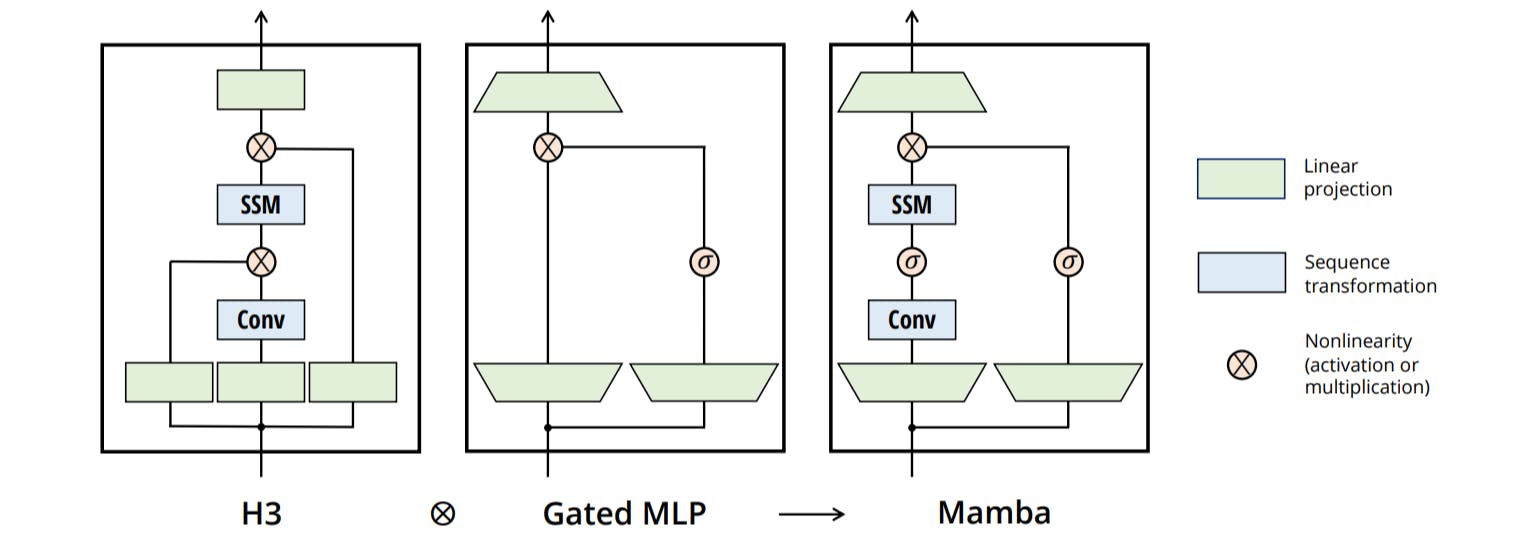Authors:
(1) Albert Gu, Machine Learning Department, Carnegie Mellon University and with equal contribution;
(2) Tri Dao, Department of Computer Science, Princeton University and with equal contribution.
Table of Links
3 Selective State Space Models and 3.1 Motivation: Selection as a Means of Compression
3.2 Improving SSMs with Selection
3.3 Efficient Implementation of Selective SSMs
3.4 A Simplified SSM Architecture
3.5 Properties of Selection Mechanisms
4 Empirical Evaluation and 4.1 Synthetic Tasks
4.4 Audio Modeling and Generation
4.5 Speed and Memory Benchmarks
A Discussion: Selection Mechanism
D Hardware-aware Algorithm For Selective SSMs
E Experimental Details and Additional Results
3.4 A Simplified SSM Architecture
As with structured SSMs, selective SSMs are standalone sequence transformations that can be flexibly incorporated into neural networks. The H3 architecture is the basis for the most well-known SSM architectures (Section 2), which are generally comprised of a block inspired by linear attention interleaved with an MLP (multi-layer perceptron) block. We simplify this architecture by combining these two components into one, which is stacked homogenously (Figure 3). This is inspired by the gated attention unit (GAU) (Hua et al. 2022), which did something similar for attention.


This paper is available on arxiv under CC BY 4.0 DEED license.

